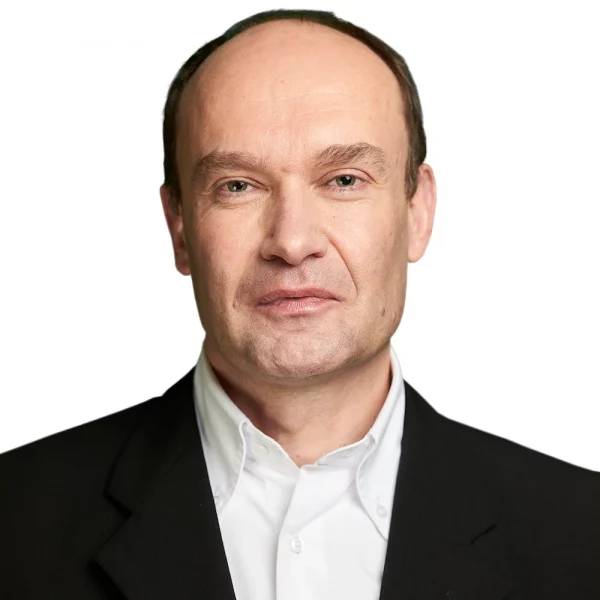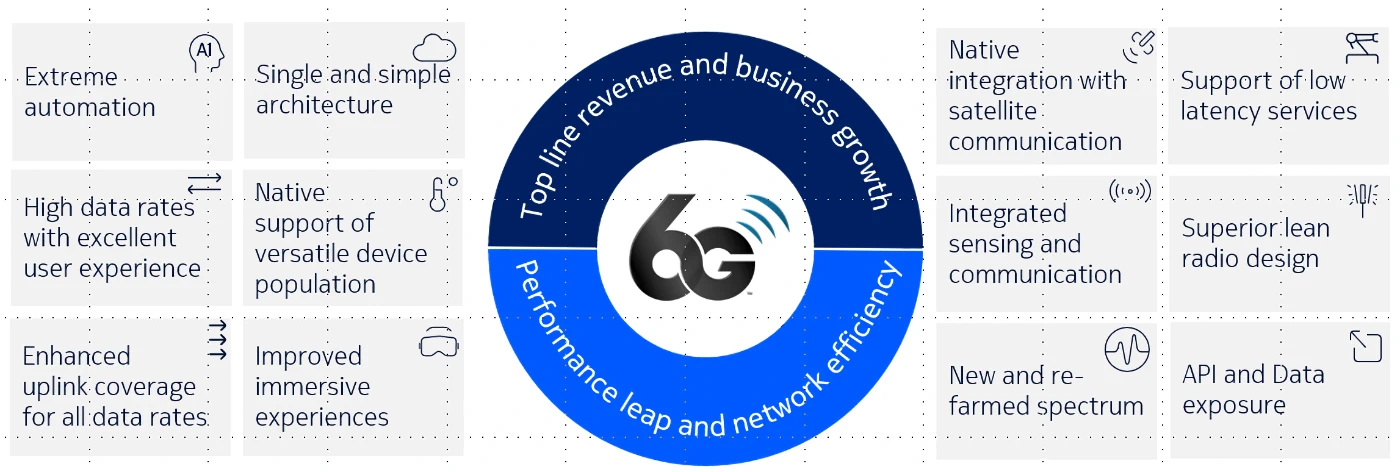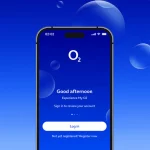Nokia Interview – 6G to Focus on Efficiency More than Mobile Broadband Speed

The Head of Standards at Nokia Technologies, Peter Merz, has today told ISPreview – as part of our latest interview – that they’re conscious of wanting to avoid what mobile operators call “G-fatigue” (over-hyping) with their development of future 6G mobile (broadband) technology, which he says will be more about “intelligence and efficiency” than raw data throughput.
The future 6G standard is currently still in the early Research and Development (R&D) phase, and most observers don’t expect to see the first commercial network builds surfacing until around 2030 (note: some countries do expect early field trials around 2028). Suffice to say that a lot of work is currently ongoing to help produce the final standard and develop prototype solutions, which is where Nokia Technologies plays a big role.
The next gen mobile technology is currently thought to be aiming for theoretical peak data rates of up to 1Tbps (Terabits per second) and may be able to harness radio spectrum up to the TeraHertz (THz) bands, while also using AI optimisations, new antenna designs and other changes to improve network efficiency. By comparison, 5G was designed to work between 450MHz and 52GHz, with top theoretical speeds of up to 20Gbps (Gigabits per second).
Advertisement
However, in practical terms, it’s worth noting that the final 6G technology will almost certainly end up being constrained by the real-world restrictions of existing data capacity and spectrum availability, with most UK mobile operators preferring to harness more economically viable lower and mid-band spectrum between 700MHz and 4GHz.
Naturally, you can get faster data speeds from using even higher frequencies, but this tends to make the signals very weak and offers poor coverage. However, there remain various unknowns about what the final 6G standard will actually deliver.
Nokia, alongside Ericsson, is currently one of the European market’s largest suppliers of mobile network technologies and related services. Suffice to say that they, via Nokia Technologies, have a lot of input into how the new standard is developing and naturally ISPreview wanted to understand more about what it might actually mean for consumers.
The good news, as Peter Merz says, is that 6G’s “defining feature isn’t raw throughput – it’s intelligence and efficiency“. Peter has been at Nokia for nearly 19 years and is responsible for shaping the evolution of access and core network technologies, as well as spearheading innovations across the automation and service delivery layers. So who better to answer some of our questions about the future mobile technology.
Advertisement
The Peter Merz (Nokia Technologies) Interview
1. Over the past few years we’ve heard about a number of technological enhancements being associated with 6G, such as the ability to harness Terahertz (THz) spectrum bands (i.e. 100GHz to 10THz) – potentially pushing data speeds of up to 100Gbps as a theoretical peak, as well as new antenna designs and so forth.
Now we’re also getting closer to the development of an early draft technical standard for 6G. Can Nokia provide a simple summary of the five main technological enhancements that you expect 6G to include and explain why they’re beneficial, as well as how fast the theoretical speeds might become for different environments?
Peter Merz said:
At Nokia we define 6G as the next-generation system that fuses the physical, digital and human worlds, moving networks beyond connectivity into platforms enabling sensing, intelligence, and immersive interaction.
In our work architecting 6G, we’re ensuring 6G standardization includes the following major technological enhancements:
1. AI-native by design: Unlike previous generations, we’re designing 6G with intelligence built in from day one – you can’t bolt intelligence on, it has to be included from the start. This will enable radios, protocols, and network functions to adapt in real-time, ensuring predictable performance, lower energy consumption, and autonomous operations. This reduces complexity for operators and enables networks to essentially manage themselves.
2. Modular, future-proof standalone architecture: We are advocating for a single, modular, and future-proof 6G architecture specifically to avoid unnecessary complexity, support modular deployment, and enable long-term sustainability and ROI for operators. We see this as ensuring 6G can co-exist with existing 5G assets and allow for smoother migration paths with the ability to scale networks as needed. This sustainable approach also maximizes the lifecycle of the existing infrastructure. In terms of speeds, modular architectures will be capable of supporting tailored deployments, with speeds optimized for specific environments—ranging from multi-gigabit connections in urban areas to hundreds of Mbps in remote regions.
3. Lean, scalable, and implementation-friendly system design: It’s important the 6G radio interface avoids the fragmentation challenges we have seen in 5G. A single, scalable technology stack for devices, RAN, and core networks will ensure faster adoption, and cost-efficient development and deployment across the ecosystem. Not only does this simplify integration for device manufacturers and operators, but it will also reduce time-to-market and lower operational costs.
4. Continuous learning and optimization: AI-native 6G networks are being designed for continuous learning and dynamic adaptation. This means that both user equipment (UE) and network-side machine learning (ML) models can evolve autonomously, utilizing real-time data to optimize performance. The benefit comes from eliminating the need for frequent specification updates, making the network more agile and future-proof.
By learning from data and adapting, 6G networks can self-optimize, which reduces the operational complexity for operators while delivering superior performance for users. This means that networks can adapt to changing demands, including varying traffic patterns or use cases.
This continuous optimization could enable peak speeds in localized hotspots, such as stadiums or event venues, while stable and reliable performance is maintained in suburban and rural areas delivering consistent connectivity across diverse environments.
5. Predictability, explainability, trust, and fit for the future: Our work is leading the development of frameworks to validate AI/ML behavior post-deployment to ensure predictability, explainability, and trust in 6G networks. This includes aligning AI cycles with Telco cycles to maximize technology developments.
By ensuring AI systems are transparent and explainable, we aim to build trust among operators, users, and regulators. This is critical for enabling the widespread adoption of future AI-driven networks while also ensuring compliance with emerging global standards.
2. In the past, the development and introduction of a new Generation (G) of mobile technology has often been accompanied by a ridiculous amount of hype, which seems to get worse with every new generational update, and yet the real-world experiences don’t always live up to that. In fairness, this often just as much of an issue for local market regulation, network capacity and spectrum management as it is one of technology.
Regardless, we’re expecting the same hype train again for 6G, which is likely to boast some wild capabilities that perhaps won’t always end up being widely adopted or which could have been done similarly well by the previous generation (5G SA, 5G or even 4G etc.), without the need for 6G. Are you expecting something like this for 6G too, or is it likely to be more of an evolution than a revolution this time around?
Advertisement
Peter Merz said:
It’s true that every new “G” has been accompanied by a wave of expectations, and sometimes the reality takes longer to catch up. We’re very conscious of avoiding what operators call “G-fatigue.” That’s why we’re shaping 6G as a smooth evolution of 5G.
The 6G radio interface is being designed to be lean, implementation-friendly and scalable. This avoids the fragmentation seen in 5G and supports high performance with minimal complexity, enabling faster deployment and broader adoption.
Nokia is advocating for a single, scalable architecture that avoids unnecessary complexity. This supports modular deployment, reuse, and coexistence—critical for long-term sustainability and operator benefits (ROI).
Nokia’s 6G architecture embeds AI/ML natively from day one across radio, core, and edge. This enables real-time adaptation, predictive performance, and autonomous operation, rather than bolting AI on top of legacy systems.
This modular by design, future-proof by nature approach means operators can protect investments while steadily upgrading.
The step-change isn’t just about higher peak speeds – it’s about AI-native design, automation, and sensing that will make networks smarter, greener, and more adaptable from day one. – AI-Native by Design, Not Retrofit
While some futuristic capabilities will be showcased, we expect 6G’s true impact to come from practical improvements (see chart)- lower energy per bit, more predictable performance, and new applications in healthcare, transport, and immersive collaboration.
There will always be bold claims. The difference this time is that 6G is being designed with today’s and future operator realities in mind. We’re delivering a smoother, more cost-efficient migration path rather than a hype-fuelled revolution that risks overpromising.
3. Speaking of which, we note how the next generation of wireless Wi-Fi 8 (802.11bn – Ultra High Reliability) networking technology is going in a bit of a different direction. Put another way, if Wi-Fi 7 was – and I’m over simplifying here – more about pushing ever faster peak speeds, then Wi-Fi 8 seems to be aiming to focus more on pulling greater network reliability, efficiency and congestion management from a finite amount of spare radio spectrum. More than a few people have suggested that this should be the focus for 6G development too, would you agree?
Peter Merz said:
While new spectrum and higher peak speeds will always be part of the story, 6G’s defining feature isn’t raw throughput – it’s intelligence and efficiency.
Operators tell us they need networks that behave more like utility/critical infrastructure – consistent, predictable, secure and resilient. That’s why 6G networks won’t just run, they’ll learn, continuously optimising performance in real time.
Like Wi-Fi 8, 6G will squeeze more value out of finite spectrum through sharing, aggregation, and adaptive radios, ensuring operators can deliver more without exponential new deployments. Where Wi-Fi 8 focuses on reliability in the local domain, 6G extends that principle globally – integrating terrestrial, satellite, and sensing capabilities so performance is consistent at scale, not just in hotspots.
So yes, we agree, 6G is about smarter, greener, and more reliable networks, not just faster ones. Peak speeds matter, but the real breakthrough will networks that adapt intelligently to whatever the world throws at them.
Please flick over to Page 2 in order to finish reading the interview.
Mark is a professional technology writer, IT consultant and computer engineer from Dorset (England), he also founded ISPreview in 1999 and enjoys analysing the latest telecoms and broadband developments. Find me on X (Twitter), Mastodon, Facebook, BlueSky, Threads.net and Linkedin.
« O2 UK Hit Customer with £1,000 Bill After Losing their Mobile Number






















































Privacy Notice: Please note that news comments are anonymous, which means that we do NOT require you to enter any real personal details to post a message and display names can be almost anything you like (provided they do not contain offensive language or impersonate a real person�s legal name). By clicking to submit a post you agree to storing your entries for comment content, display name, IP and email in our database, for as long as the post remains live.
Only the submitted name and comment will be displayed in public, while the rest will be kept private (we will never share this outside of ISPreview, regardless of whether the data is real or fake). This comment system uses submitted IP, email and website address data to spot abuse and spammers. All data is transferred via an encrypted (https secure) session.